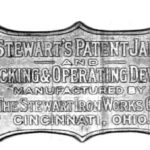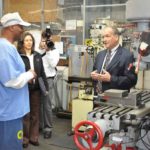Prior to the Volkswagen Bug, Frankfurter, Werner Klemperer and Beethoven, Germany bestowed upon mankind an icon of greater importance: The modern … [Read more...]
S.Q. Machine Shop Crafts Bronze Plaque for Alcatraz
San Quentin inmates are lending a hand to the Alcatraz Island Museum Project. They are making bronze castings of the last remaining plaque that used … [Read more...]
NASA Training Starts For Machine Shop
San Quentin’s Vocational Machine Shop students have begun training for a new project launched by NASA Ames. Vocational Machine Shop instructor … [Read more...]
Breaking the Cycle Of Crime, Punishment
For the last half-dozen years, a new approach is being promoted in San Quentin Prison to help break the cycle of crime and punishment that has … [Read more...]

